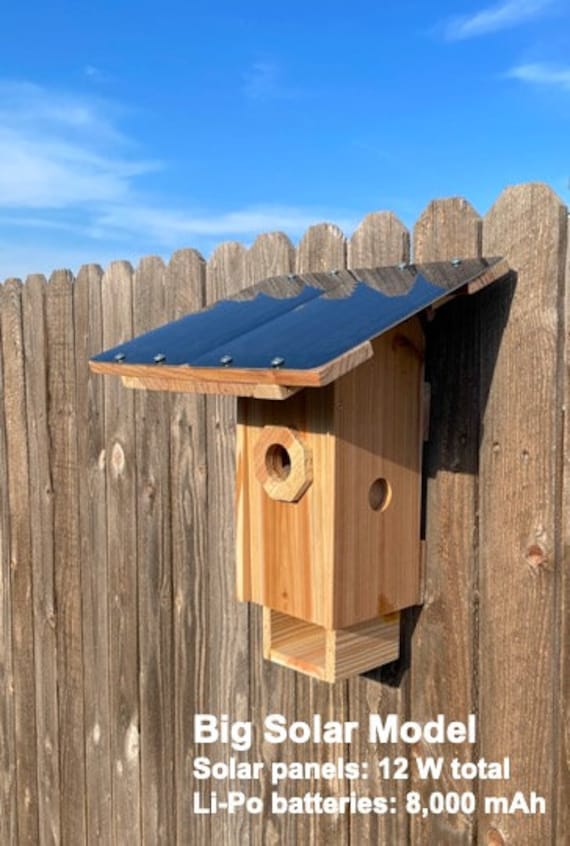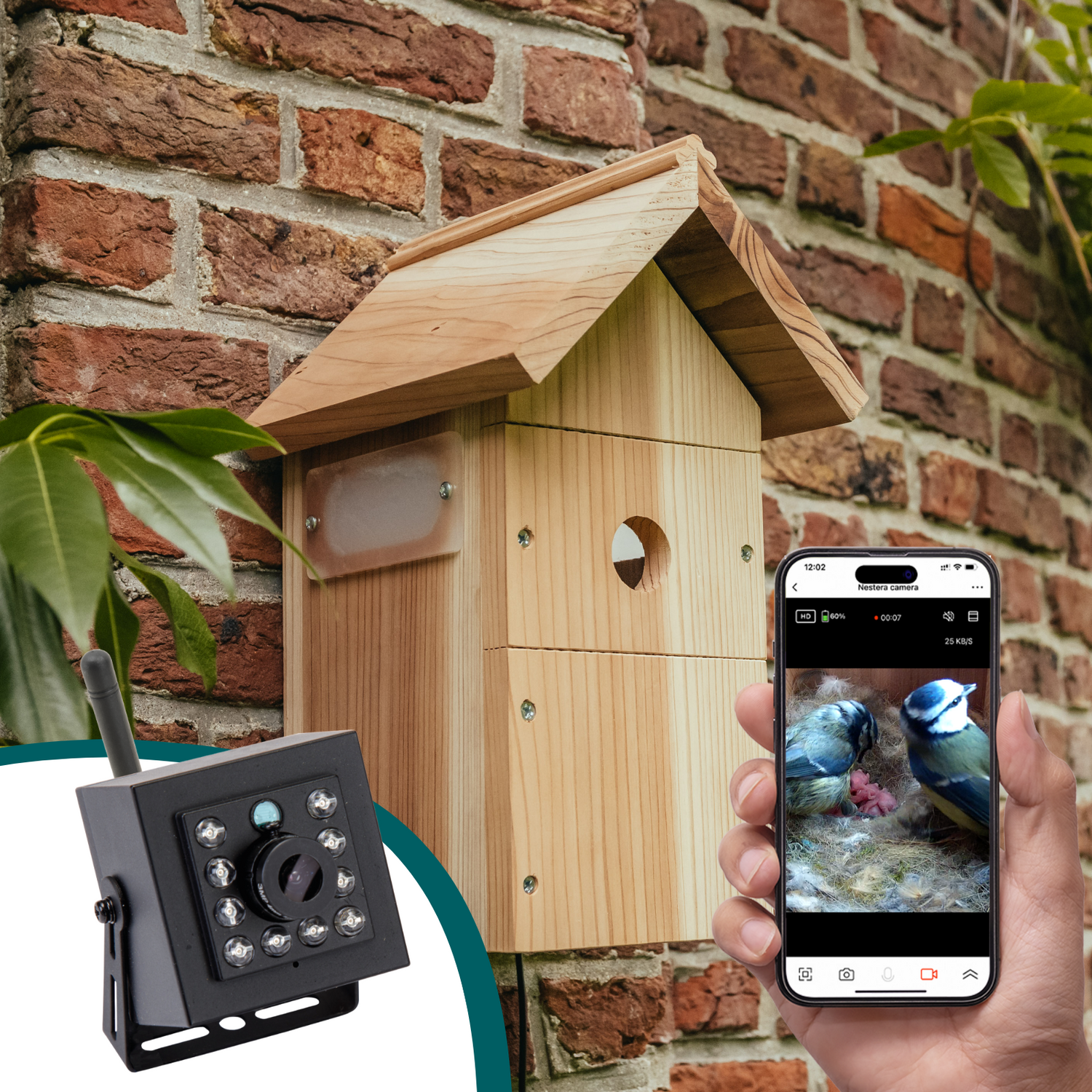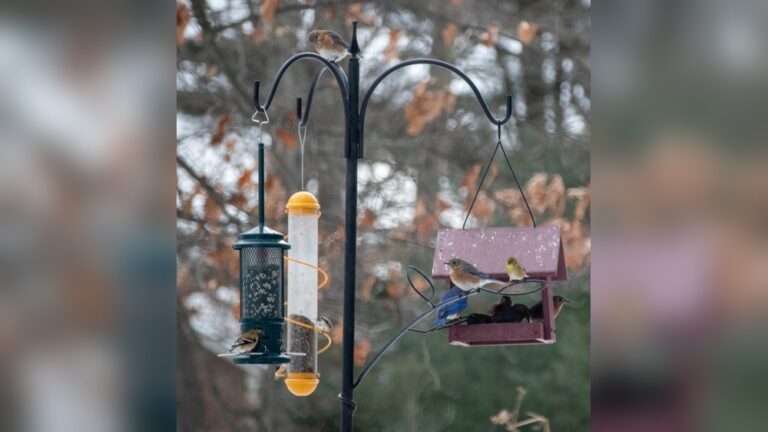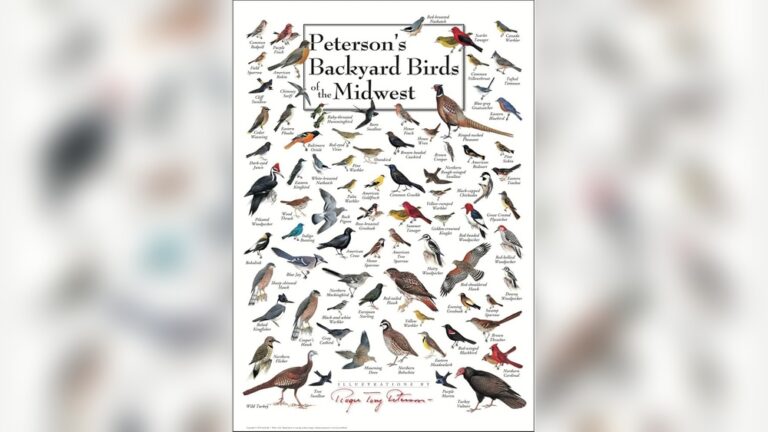Bird Nesting Boxes With Cameras
Have you ever wished you could watch birds up close without disturbing their natural home? Bird nesting boxes with cameras let you do just that.
Imagine seeing baby birds hatch, grow, and take their first flight—all from the comfort of your own home. This simple tool turns your backyard into a front-row seat for nature’s most heartwarming moments. Keep reading, and discover how these smart boxes can bring excitement, learning, and a deeper connection to wildlife right to you.
Benefits Of Nesting Boxes With Cameras
Nesting boxes with cameras offer many benefits for bird lovers and nature watchers. They allow close observation of birds without disturbing them. These boxes provide a unique way to see birds up close in their natural habitat. The cameras capture every moment, from building nests to feeding chicks.
Using nesting boxes with cameras makes birdwatching more exciting and educational. They also help support bird conservation. Schools, families, and researchers can all learn from the live footage. This technology brings the hidden world of birds right to your screen.
Enhancing Birdwatching Experience
Cameras inside nesting boxes give a front-row seat to bird life. Watch birds build nests, lay eggs, and care for their young. You see details that are hard to spot with the naked eye. Watching live feeds feels like being right there. This close view increases interest and joy in birdwatching.
Supporting Conservation Efforts
Scientists use camera data to study bird habits and health. This helps protect endangered species and their homes. Nesting boxes with cameras provide safe monitoring without stress to birds. Communities can track bird populations and spot problems early. This supports better care and protection for wild birds.
Educational Opportunities
Schools and families can use camera feeds for learning about nature. Kids see real-life examples of bird behavior and life cycles. This hands-on learning sparks curiosity and respect for wildlife. Teachers use videos to explain biology and ecology simply. Nesting boxes with cameras make education more fun and clear.
Types Of Nesting Boxes
Nesting boxes with cameras come in various types. Each type suits different bird species and environments. Choosing the right type helps attract birds and lets you watch them closely. Understanding the main types of nesting boxes makes the selection easier.
Materials Used
Wood is the most common material for nesting boxes. It offers good insulation and blends well with nature. Some boxes use plastic, which lasts longer and resists weather. Metal boxes are rare but very durable. Natural materials keep birds safe and comfortable.
Design Variations
Nesting boxes vary in design to fit bird needs. Some have simple, open-front designs for quick access. Others feature a closed front with a small entry hole to protect eggs. Some designs include a sloped roof to keep rain out. Ventilation holes help keep air fresh inside.
Size Considerations
Size depends on the bird species you want to attract. Small boxes suit tiny birds like wrens and chickadees. Larger boxes work for bigger birds such as bluebirds or woodpeckers. The entrance hole size also matters for safety and comfort. Proper sizing ensures birds feel safe and use the box.
Camera Options For Nesting Boxes
Choosing the right camera for your bird nesting box is important. It helps you watch birds safely without disturbing them. Different cameras offer various benefits. Understanding these options helps you pick the best one for your needs.
Wired Vs Wireless Cameras
Wired cameras connect with cables for power and video. They offer steady signals and clear images. Installation can be harder because of wires. Wireless cameras use Wi-Fi or other signals. They are easier to install and move. Wireless may face signal drops or delays. Choose based on your setup and convenience.
Camera Resolution And Features
Higher resolution means clearer and sharper images. Look for cameras with at least 720p or 1080p. Some models include zoom, motion detection, or sound recording. These features help you see small details and bird activity. Pick features that match your observation goals.
Night Vision Capabilities
Birds may nest in low light or at night. Night vision lets you watch in darkness without disturbing birds. Infrared LEDs provide clear black-and-white images at night. Choose cameras with good night vision for all-day monitoring. This way, you don’t miss any bird activity.
Installation Tips
Installing a bird nesting box with a camera can be simple with the right steps. Careful setup helps birds feel safe and lets you capture clear videos. Follow these tips to place and secure your box correctly.
Choosing The Right Location
Pick a spot away from loud noises and busy areas. Birds prefer quiet, sheltered places. Look for a location with some shade to protect birds from heat. Place the box 5 to 10 feet off the ground for safety. Avoid areas with strong winds or direct sunlight.
Mounting The Box Securely
Use strong brackets or straps to fix the box firmly. Ensure it does not wobble or sway in the wind. A steady box keeps birds calm and the camera steady. Avoid using nails that can damage trees; opt for adjustable straps instead. Check the box regularly to tighten any loose parts.
Ensuring Camera Stability
Attach the camera tightly inside the box. Use mounts designed for small cameras to prevent movement. Avoid placing the camera where it can be blocked by nesting materials. Test the camera angle before finalizing the setup. A stable camera captures clear, steady images of the birds.
Maintenance And Care
Taking care of bird nesting boxes with cameras is important for their long life. Regular maintenance keeps birds safe and cameras working well. Clean boxes help birds stay healthy. Cameras need attention to capture clear videos. Seasonal care protects both the box and the equipment.
Cleaning Nesting Boxes
Remove old nesting material after each season. Use a soft brush to clear dirt and debris. Avoid harsh chemicals that can harm birds. Wash the box with warm, soapy water and rinse well. Let the box dry completely before reuse. Clean boxes reduce parasites and diseases. This keeps birds safe and happy.
Camera Upkeep
Check the camera lens regularly for dust and smudges. Use a soft cloth to clean the lens gently. Inspect cables and connections for damage or wear. Keep the camera housing sealed to prevent water entry. Test the camera often to ensure clear images. Replace batteries or recharge as needed. Good upkeep means better footage and longer device life.
Seasonal Considerations
In winter, protect boxes from heavy snow and ice. Ensure cameras are weatherproof or sheltered. Summer heat may require shade to avoid overheating. Watch for signs of mold or mildew in humid months. Prepare boxes for spring nesting by cleaning early. Seasonal care helps birds nest safely year-round. It also keeps your equipment ready for use.

Credit: www.etsy.com
Monitoring And Recording
Bird nesting boxes with cameras allow easy watching of birds without disturbing them. Monitoring and recording help capture the birds’ daily activities. This technology brings nature closer to your home. It also helps study bird behavior and protect their habitat.
Live Streaming Options
Many bird boxes offer live streaming through Wi-Fi or mobile networks. Watch birds on your phone, tablet, or computer anytime. Some cameras have night vision to see birds in low light. Streaming keeps you connected to nature from anywhere.
Recording And Storage Solutions
Record videos automatically or manually to save special moments. Storage options include SD cards, cloud services, or local drives. Cloud storage keeps footage safe and easy to access. Choose the best option based on your internet and budget.
Sharing Footage
Sharing bird videos with friends or on social media spreads joy and awareness. Many systems allow easy sharing via apps or email. Sharing helps others learn about birds and their environment. It can create a community of nature lovers.
Ethical Considerations
Using bird nesting boxes with cameras can be exciting and educational. Watching birds up close helps us learn about their behavior. Still, we must think about how our actions affect the birds. Ethical considerations are important to protect birds and respect their space. Following simple guidelines ensures we enjoy bird watching without causing harm.
Minimizing Disturbance To Birds
Place cameras carefully to avoid scaring birds. Avoid touching the nest during breeding season. Keep noise and movement near the nest low. Check cameras from a distance to prevent stress. Turn off lights or sounds that may bother birds. Respect the birds’ natural routine and habitat.
Privacy Concerns
Birds have the right to privacy in their nests. Avoid sharing live feeds without consent from neighbors. Do not record or share images of private property. Use footage only for educational or personal use. Protect the identity of nearby people or pets. Respecting privacy builds trust and good relationships.
Legal Regulations
Learn local laws before installing nesting box cameras. Many places protect birds and their nests by law. Some species need special permits to monitor. Follow rules about camera placement and use. Avoid disturbing protected or endangered species. Staying legal helps protect birds and avoids fines.

Credit: www.amazon.com
Popular Bird Species For Nesting Boxes
Bird nesting boxes with cameras attract many popular bird species. These boxes provide safe places for birds to lay eggs and raise their young. Cameras help us watch birds closely without disturbing them. Here are some common birds that use nesting boxes.
Songbirds
Songbirds love nesting boxes in gardens and parks. Species like bluebirds, chickadees, and wrens often choose these homes. They build small nests inside the box. Cameras capture their songs and daily activities. Watching songbirds can be peaceful and fun.
Owls
Owls sometimes use larger nesting boxes. Species such as screech owls and barn owls prefer quiet spots. These birds are mostly active at night. Cameras help observe their hunting and feeding without causing stress. Owls bring a special charm to any backyard.
Woodpeckers
Woodpeckers often nest in tree holes but also use boxes. Downy and hairy woodpeckers are common visitors. They like boxes with rough wood to help them grip. Cameras reveal their busy work pecking and feeding chicks. Woodpeckers add energy and sound to nature watching.
Troubleshooting Common Issues
Bird nesting boxes with cameras bring nature close to you. Watching birds in their natural home is exciting. Yet, some common problems might occur. Knowing how to fix these issues helps keep your setup working well. Troubleshooting is easier with clear steps.
Camera Connectivity Problems
Camera not connecting to Wi-Fi? Check the signal strength near the box. Move your router closer if the signal is weak. Restart the camera and your router for a fresh connection. Make sure your password is correct. Update the camera’s software to fix bugs. Use a strong and stable internet connection for best results.
Predator Protection
Predators can scare birds away from the box. Place the box high on a pole or tree. Add a metal guard around the pole to block climbing animals. Avoid using materials that predators can chew. Check regularly for signs of damage or predator visits. Safe birds mean better chances to watch them.
Weather-related Challenges
Rain, wind, and cold can affect the camera and box. Use waterproof cameras designed for outdoor use. Cover the box with a small roof or shield to stop rain inside. Secure the box tightly to prevent it from moving in strong wind. Clean and dry the camera lens for clear video. Protect your equipment to enjoy long-lasting use.

Credit: nestera.co.uk
How Smart Pets Lover Can Help You with Bird Nesting Boxes With Cameras
Turning Curiosity Into Practical Learning with Nesting Boxes and Cameras
Watching birds build nests and care for their young through a camera-equipped nesting box can be a deeply rewarding experience. It’s not just about observation—this setup offers a unique, hands-on way to learn about bird behavior and ecology. By choosing the right camera options for nesting boxes and following smart installation tips, you create an educational window into nature that’s accessible year-round.
For families and pet lovers alike, this can spark meaningful conversations about wildlife, conservation, and ethical considerations—reminding us all to respect the delicate balance of nature. At Smart Pets Lover, we believe every glimpse into a bird’s world brings you closer to understanding and appreciating your feathered neighbors, aligning perfectly with our mission to deepen connections with all creatures.
- Observe different popular bird species and their nesting habits
- Note changes over time with regular monitoring and recording
- Practice responsible maintenance and care for your setup
If you have questions about setting up your own nesting box camera or want tips tailored to your local birds, reaching out to local wildlife groups or experts can be invaluable. Sometimes, the best learning comes from sharing stories and knowledge—because every chirp truly tells a story worth hearing.
Frequently Asked Questions
What Are Bird Nesting Boxes With Cameras?
Bird nesting boxes with cameras are birdhouses equipped with small cameras. They allow real-time observation of bird behavior without disturbance. These boxes help bird watchers and researchers study nesting habits safely and conveniently.
How Do Bird Nesting Box Cameras Work?
These cameras are usually battery-powered or wired inside the box. They capture video or images of nesting birds and transmit data to a monitor or smartphone. Many models include night vision for 24/7 observation.
Are Bird Nesting Boxes With Cameras Safe For Birds?
Yes, when designed properly, cameras do not disturb birds. The cameras are small and hidden to avoid stress or harm. It’s essential to install boxes in quiet, secure locations for bird safety.
Can Bird Nesting Boxes With Cameras Help Bird Conservation?
Absolutely, they provide valuable data on breeding, species behavior, and threats. This information supports conservation efforts and helps protect bird populations. They also educate the public about bird ecology.
Conclusion
Bird nesting boxes with cameras offer a unique way to watch birds closely. They help us learn about bird habits and life. These boxes protect birds while letting us enjoy nature safely. Anyone can set up a camera and see bird families at home.
Watching birds grow and explore feels special and calming. Such technology brings nature closer to our daily lives. Try using a nesting box with a camera to connect with wildlife. It is simple, fun, and full of surprises.






